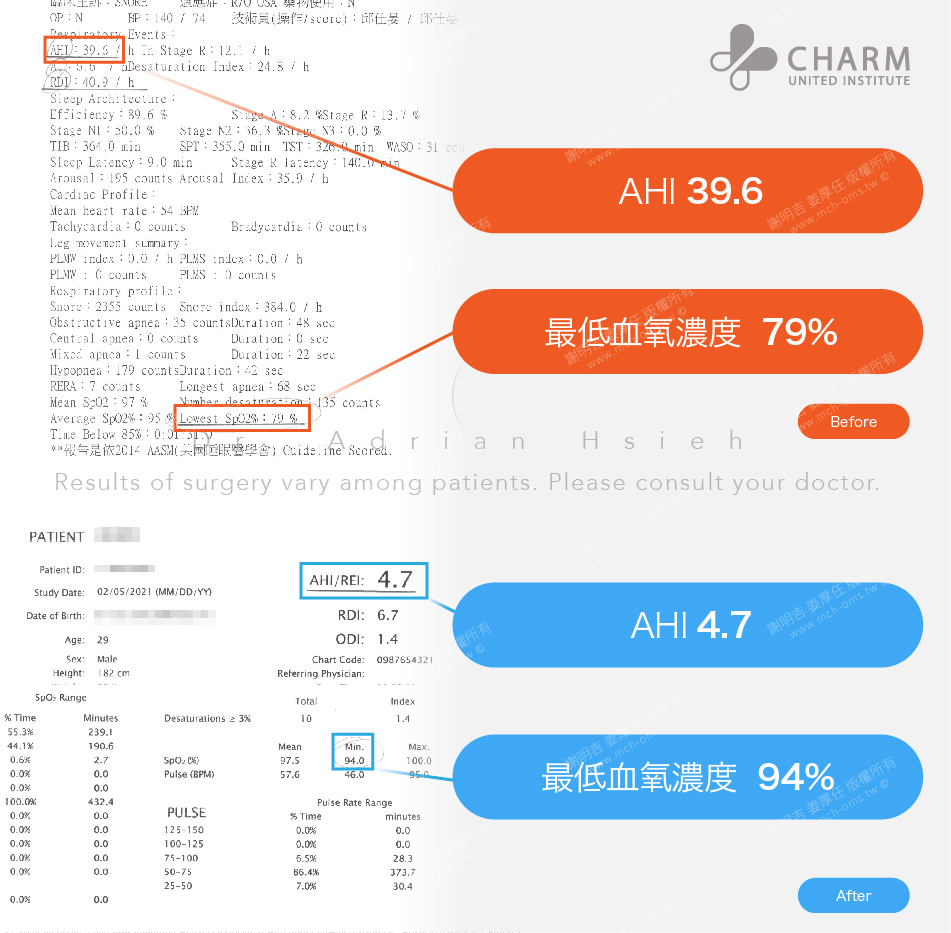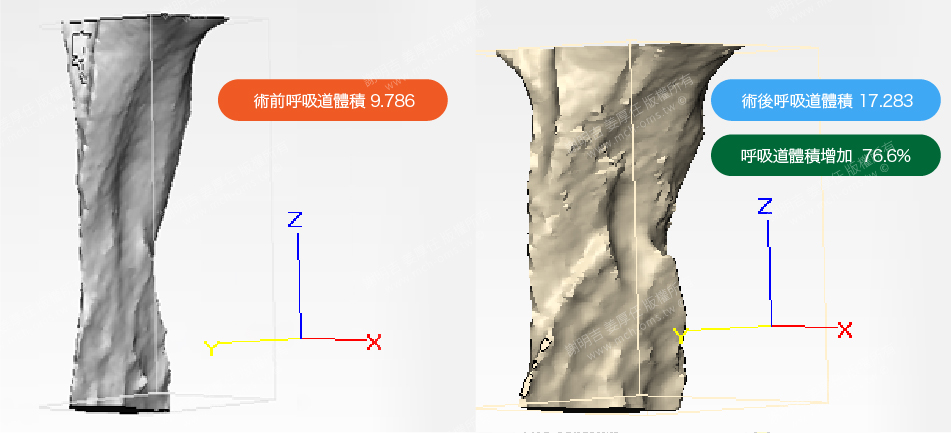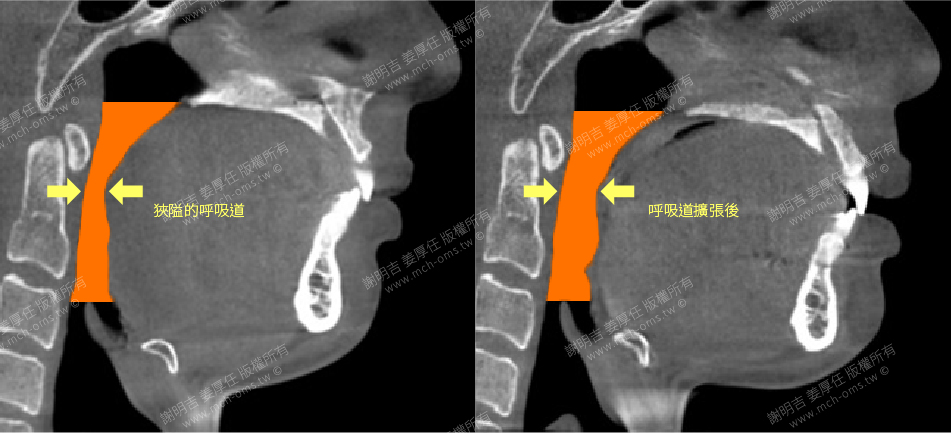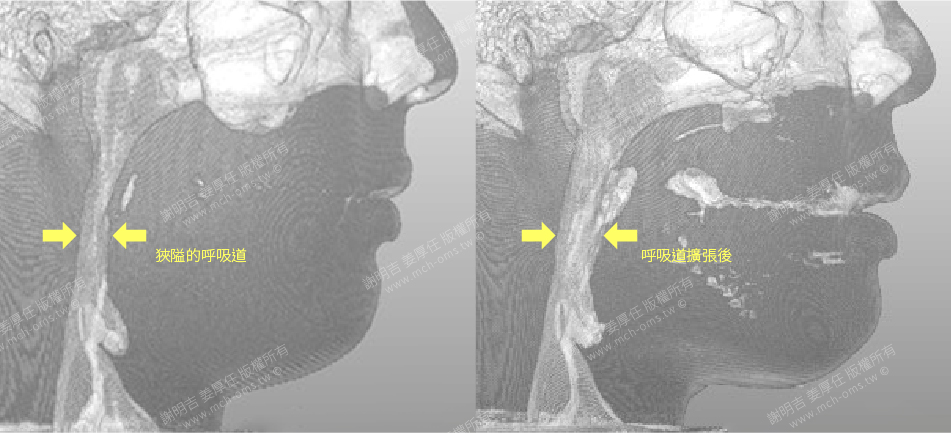| Preoperative symptoms | surgical plan |
| Retruded jaw, no chin affecting airway space, severe sleep apnea | 3D customized orthognathic surgery |
Diagnosis and treatment plan and postoperative changes
Although positive pressure respirators are considered one of the priority treatments for sleep apnea, patient tolerance to adapting to positive pressure respirators is very low.
According to research reports, up to 83% of patients cannot effectively wear positive pressure respirators for a long time (Note 1), and as many as 80% of people cannot tolerate the use of positive pressure respirators for a long time.
*Note 1: Effective wearing is defined as use for more than 4 hours every night, and is used more than 70% of the nights.
This case is a 29-year-old male patient with AHI = 39.6 before surgery. He will have symptoms such as nasal congestion, snoring, lack of sleep, fatigue, and being easily tired during the day.
He had received treatment with a positive pressure respirator, but because of the foreign body sensation when wearing the positive pressure respirator, he would always remove it in his sleep, so he came to seek a fundamental solution.
We performed counterclockwise rotational orthognathic surgery on him to rotate the upper and lower jaw bones forward, which also moved the anterior pharyngeal wall forward to widen the airway. We also performed bilateral turbinoplasty to open up multiple obstruction points.
His AHI dropped from 39.6 preoperatively to 4.7 postoperatively. The minimum blood oxygen concentration increased from 79% to 94%. The volume of the respiratory tract increased by 76.6%, and the AHI index decreased by 88.13%. Congratulations to this patient for successfully overcoming sleep apnea.









